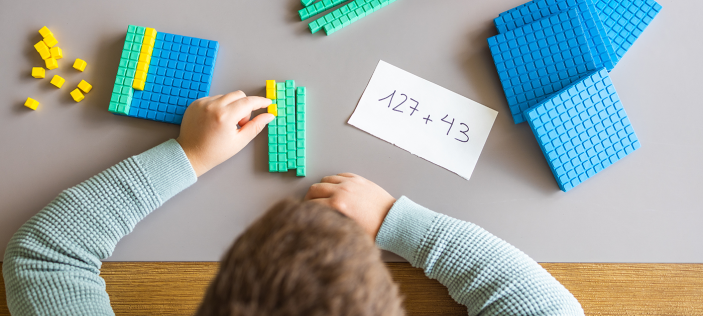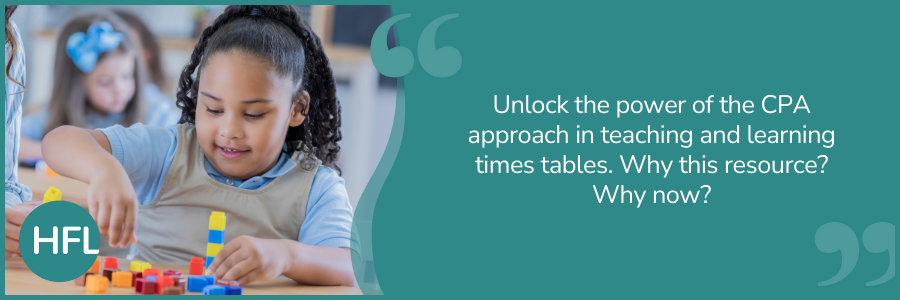
In my previous blog, Deepening understanding from Reception into KS1 and KS2 – the CPA approach for Equal Difference, I tracked the strategy of Equal Difference from its starting point in EYFS to its application in upper key stage 2. The focus was on how manipulatives could be used effectively to support in its acquisition. More specifically, I explored the point at which a shift in the type of manipulative used could enable deeper conceptual understanding and thus move the learning on. In this blog, I will provide a further example of this, but in a different context.
Multiplication Tables Check
The National Curriculum stipulates that pupils are fluent in all times tables facts up to 12 x 12 by the end of Year 4. These facts are then tested in the Multiplication Tables Check (MTC) - a national online test that takes place during the summer term. Helping pupils recall their multiplication facts continues to be a focus for many schools for this reason, but more importantly because we know that if pupils can automatically recall their times tables, it frees up working memory to be able to tackle more complex calculations as they move into upper key stage 2 and beyond.
Explicit times tables teaching
Before I provide a worked example in this context, it is important to highlight that times tables need to be explicitly taught in order for them to be learnt. Research conducted by the Institute for Effective Education in 2019 found that there was no optimal balance between procedural and conceptual strategies for achieveing fluency in times tables, but that there must be opportunity for both throughout the curriculum.
In this example, I will focus on the conceptual element of teaching times tables through the use of manipulatives, with the understanding that there is also a place for more procedural strategies such as low-stakes testing and flashcards alongside. In her blog, Putting your school in the driving seat for the Year 4 Multiplication Tables Check, Rachael Brown exemplifies this further.
An approach for teaching times tables conceptually
When starting to count in multiples, pupils will often begin with a linear model such as a beadstring to reinforce the equal groups, usually around the end of Year 1 or Year 2 for the 2x, 5x and 10x table facts.
Pupils can count the beads in ones or move across groups to discover each new fact and write them down to create a list. At this stage, the linear model is important as it links with what they currently understand about counting sequentially and number lines. A bead string is particularly helpful for the fives and tens, due to the red and white colours of the beads that change after each multiple of 10.
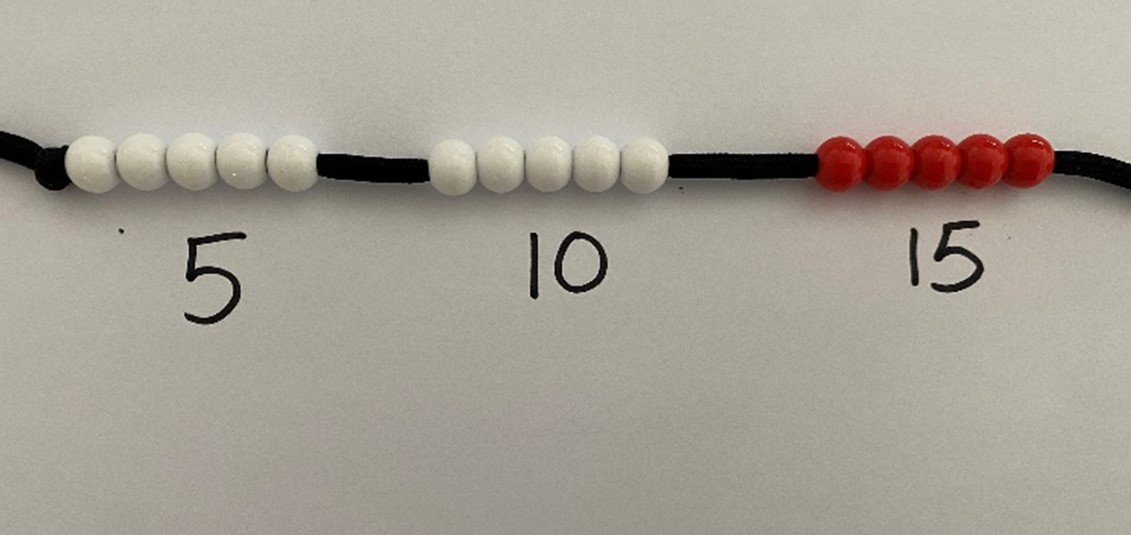
Following this practical approach to discovering the multiples, the bead string can be lined up against a number line to show the connection between the representations. Pupils could discuss what’s the same and what’s different
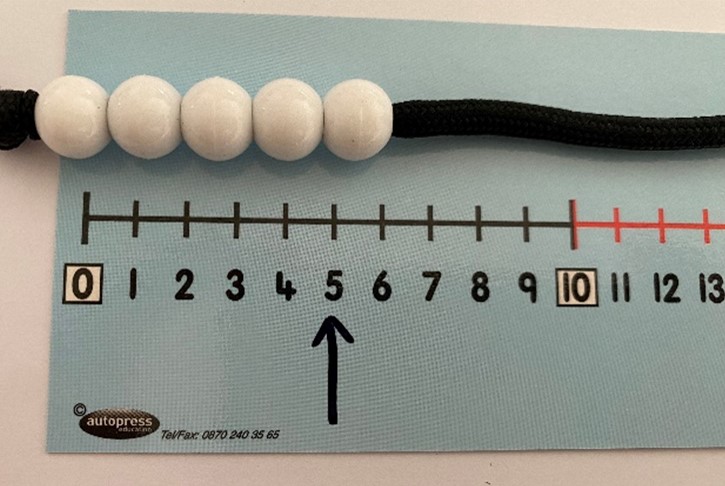
Only including the multiples within the times table will model that the unit has changed. 1 marked space on the line no longer represents 1 – you have created 1 group.

The number line image can be replicated by a counting stick to provide opportunity for rehearsal through chanting and counting and so building the fluency of counting the multiples in sequential order.
At this stage in the progression, it is important to shift the representation away from a linear model, so that pupils can learn to recall the facts out of order, without needing to count from 0 each time.
A sensible option would be to use unifix cubes.
Ask pupils to group the unifix into equal groups and reinforce the connection between the group of 5 unifix and the 5 on the number line.

Making explicit connections
Once lined up to replicate the number line, the groups of unifix can then be moved one at a time to create an array. This stage is really important for the children to witness because all too often, they experience counting in multiples on the number line and then the array is introduced separately, but the link between the two has not been explicit enough for them to make the connection
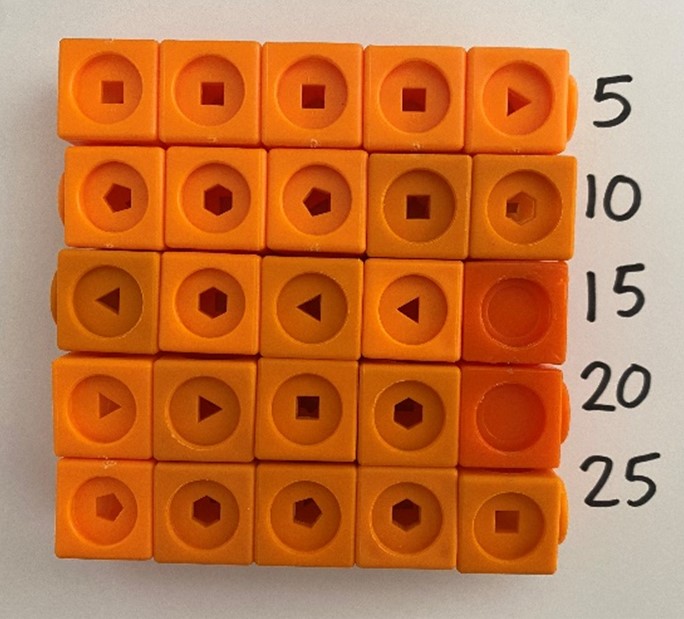
Making connections across the curriculum
Using the array, pupils are able to make all sorts of connections across the curriculum to explore concepts such as:
Division
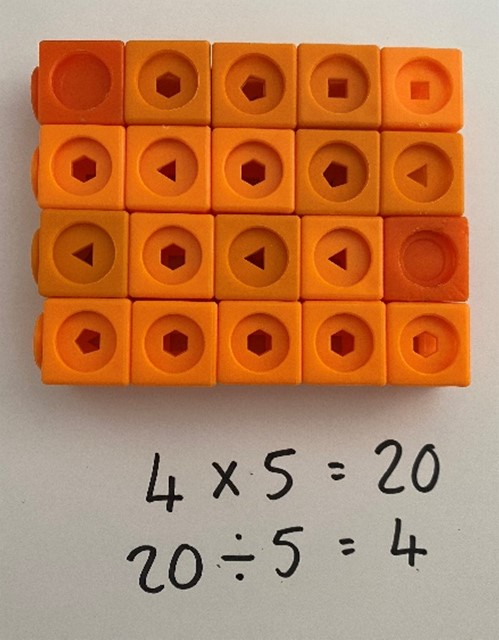
Commutativity
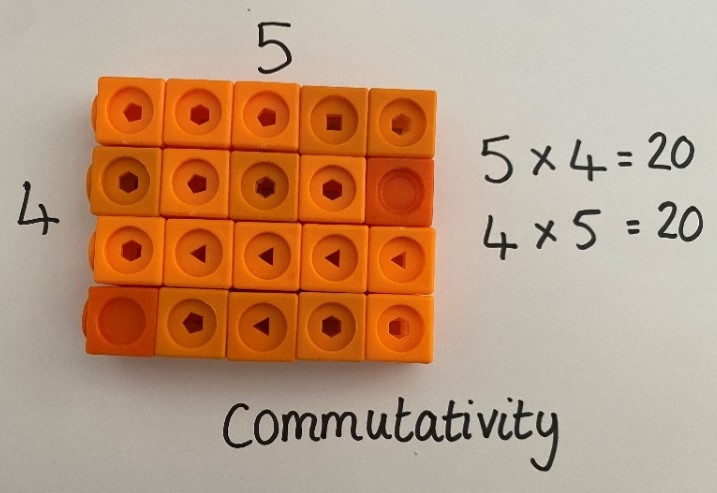
Distributivity
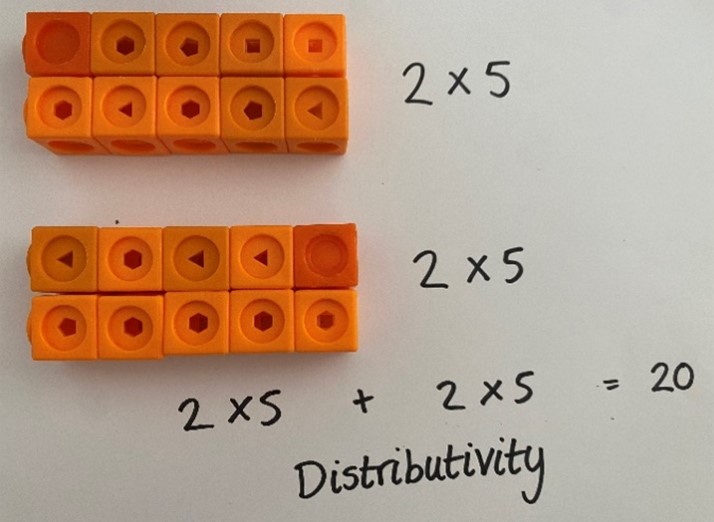
Without the careful shift of resource at this point, some pupils may find it difficult to make connections and so factual recall would not be as strong.
Introducing new times tables and making connections
Each time a new times table is introduced, allowing pupils time to explore and build the times table on a beadstring can enable children to spot patterns and to make connections to times tables they already know.
For example, when building the 8x table, children may notice (or teachers may draw attention to the fact that):
- All of the multiples are even
- In each group of 8, there’s ‘double 4’
- In each group of 8, there’s ‘double 2 and double again’

Physically seeing what’s happening as a times table builds will support with strategy development going forward and children’s ability to use known facts to work out any they cannot yet recall.
The idea of children discovering the facts for themselves before they begin to rehearse must be repeated every time, but not necessarily in the same way. Kate Kellner-Dilks demonstrates further strategies for teaching times tables in her blog, Starting from the beginning: how to learn times tables.
CPA opportunities across the maths curriculum
Teaching through the Concrete, Pictorial, Abstract (CPA) approach has become second nature to primary teachers. To enhance this pedagogy further, it is important that teachers consider when to change the choice of manipulative to move learning on.
Careful consideration should be given to which model is best suited for the job – linear, part/whole, array – there are many options.
The decision about whether the resource will show all ones, or begin to unitise and ‘group’ the ones completely, depends on what the teacher is aiming to get from the lesson, and more importantly, where they want to end up.
Ultimately, the CPA approach is so much more than just offering a resource as a ‘crutch’ to help a child reach an answer.
When used well, it is the difference between a child achieving deep conceptual understanding of mathematics… or not.
Is this a key focus in your school?
Join us this November at the Hertfordshire Development Centre in Stevenage for Practical ways to assess, scaffold and secure maths learning in your classroom; applying Rosenshine’s Principles of Instruction.
The HFL Education Primary Maths team can work with you in school to develop the teaching and learning of multiplication facts through The Multiplication Package.
Find out more about the HFL Education Curriculum Impact Packages:
To keep up to date: Join our Primary Subject Leaders’ mailing list
To subscribe to our blogs: Get our blogs straight to your inbox
References
Avis, M. (2019). Improving times table fluency. York, England: Institute for Effective Education.




